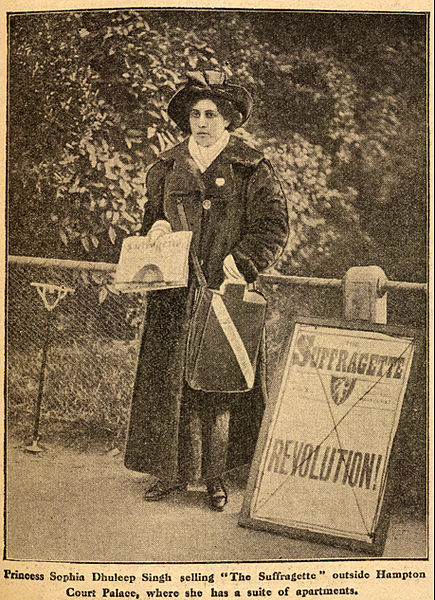This article takes a detailed journey through pivotal moments that occurred on January 12th across various years, showcasing a tapestry of human history marked by political milestones, technological advancements, cultural shifts, and profound tragedies.
From the formation of societies that influenced the course of aviation, to groundbreaking moments in civil rights, and onto the tragic events that united the world in grief and solidarity, each event selected provides insight into the complexities and richness of our shared past.
This exploration not only commemorates those moments but also reflects on their lasting impact on contemporary society and the lessons they continue to offer.
Through this chronological narrative, we aim to celebrate achievements, remember the costs of conflicts and disasters, and honor those who have shaped the world on this day in history.
January 12th Events in History
475 – Basiliscus becomes Byzantine Emperor, with a coronation in the Hebdomon palace in Constantinople
Basiliscus ascended to the throne during a tumultuous period in the history of the Byzantine Empire, marked by internal strife and external threats. His rise to power came about through a rebellion against the then-emperor Zeno.
Basiliscus was known for his unsuccessful military campaigns and his association with the Monophysite controversy, which created further religious divisions within the empire.
Also Read: January 11 – On this Day in History
His reign was short-lived, lasting only 20 months, after which Zeno reclaimed the throne and Basiliscus was captured and executed. His time as emperor is often remembered for its failures and the instability it brought to the Byzantine Empire.

1528 – Gustav I of Sweden is crowned king
Gustav I, also known as Gustav Vasa, is considered one of the most important figures in Swedish history. He played a pivotal role in leading the Swedish rebellion against Danish rule, which ultimately resulted in the end of the Kalmar Union and the establishment of Sweden as an independent kingdom.
Also Read: January 13th Events in History
His coronation as king not only marked the beginning of a new era for Sweden but also the start of the Vasa dynasty, which would rule Sweden for over a century. Gustav I’s reign included significant reforms, including the introduction of Protestantism, which laid the foundation for the modern Swedish state.
1554 – Bayinnaung, who would go on to assemble the largest empire in the history of Southeast Asia, is crowned King of Burma
Bayinnaung’s coronation marked the beginning of one of the most expansive empires in Southeast Asian history.
His military campaigns extended the Burmese Empire across much of present-day Myanmar, Thailand, Laos, and Cambodia. Bayinnaung is remembered not only for his military conquests but also for his administrative reforms and patronage of Buddhism.
His efforts to integrate and administer a diverse empire laid the groundwork for the development of the Burmese state and culture. His legacy is still celebrated in Myanmar and the broader region as a symbol of unity and strength.
1773 – The first public museum in the United States is established in Charleston, South Carolina
The establishment of the first public museum in Charleston represents a significant moment in American cultural history.
This museum, founded by the Charleston Library Society, was crucial in making collections of natural history, artifacts, and other items of interest accessible to the public, reflecting a growing American interest in science, education, and culture during the colonial period.
The museum underscores the role of such institutions in community education and in fostering a sense of inquiry and appreciation for the natural world and human history.
1808 – John Rennie’s scheme to defend St Mary’s Church, Reculver, founded in 669, from coastal erosion is abandoned in favor of demolition
The decision to demolish St Mary’s Church in Reculver due to the threat of coastal erosion was a poignant loss for English heritage. Founded in 669, the church was an important example of Anglo-Saxon architecture and contained significant historical and cultural artifacts.
John Rennie, a prominent engineer of the time, initially proposed defenses to protect the church from the advancing coastline. However, the financial and practical challenges of such an endeavor led to the eventual demolition of the church.
The loss of St Mary’s Church highlights the ongoing conflict between preserving historical sites and the forces of nature or development.

1848 – The Palermo rising takes place in Sicily against the Bourbon Kingdom of the Two Sicilies
This event marks the beginning of the Sicilian revolution of 1848 against the Bourbon Kingdom of the Two Sicilies. It was part of the wider wave of the 1848 revolutions that swept through Europe.
Sicilians were demanding their own constitution and autonomy from the Bourbon rule, leading to a year-long struggle. Although initially successful in gaining some autonomy, the movement was eventually crushed by the Bourbon forces.
1866 – The Royal Aeronautical Society is formed in London
Founded in London, the Royal Aeronautical Society is the oldest aeronautical society in the world. Its creation marked an important moment in the history of aviation, as it aimed to promote the advancement of aeronautical art, science, and engineering.
The society has played a significant role in the development of aeronautical standards, education, and professional recognition throughout its history.
1895 – The National Trust is founded in the United Kingdom
The National Trust for Places of Historic Interest or Natural Beauty, commonly known simply as the National Trust, was founded in the United Kingdom by Octavia Hill, Sir Robert Hunter, and Hardwicke Rawnsley.
The organization was established to preserve the nation’s heritage and open spaces for the benefit of the public. Over the years, it has become one of the largest landowners in the UK, caring for historic houses, gardens, mills, coastline, forests, farmland, moorland, islands, castles, nature reserves, and villages.
1906 – Sir Henry Campbell-Bannerman’s cabinet (which included Winston Churchill) embarks on significant social reforms after its election victory in 1906
After winning the 1906 general election, Sir Henry Campbell-Bannerman’s Liberal government embarked on a series of significant social reforms. This period is noted for laying the foundations of the modern welfare state in the UK.
Reforms included the introduction of old age pensions, reforms to the education system, improvements in worker rights, and housing. The government’s efforts marked a shift towards more interventionist policies aimed at reducing poverty and addressing social inequalities.
1915 – The United States House of Representatives rejects a proposal to give women the right to vote
In a significant moment in the history of women’s suffrage in the United States, the House of Representatives rejected a proposal to grant women the right to vote. This setback did not deter the suffragettes, however.
They continued to fight for their rights, leading to the eventual passage of the Nineteenth Amendment to the United States Constitution in 1920, which prohibited the states and the federal government from denying the right to vote to citizens of the United States on the basis of sex.

1926 – Original Sam ‘n’ Henry airdates on Chicago radio later renamed Amos ‘n’ Andy in 1928
Before becoming the widely acclaimed radio show “Amos ‘n’ Andy,” it was initially called “Sam ‘n’ Henry.” The show first aired in 1926 on Chicago’s WGN radio station.
Created by Freeman Gosden and Charles Correll, who were white men performing in blackface in the voices of two black characters, the show depicted the experiences of African Americans who had moved from the South to the North during the Great Migration. Despite its popularity, the show later faced significant criticism for perpetuating racial stereotypes.
1932 – Hattie Caraway becomes the first woman elected to the United States Senate
Hattie Wyatt Caraway, a Democrat from Arkansas, made history by becoming the first woman elected to serve a full term as a United States Senator. Initially appointed to fill her deceased husband Thaddeus Caraway’s seat in 1931, she won a special election in 1932 to complete the term and was re-elected in 1932 and 1938. Caraway was known for her advocacy of women’s rights, disaster relief, and education during her tenure in the Senate.
1966 – President Lyndon B. Johnson states in his State of the Union address that the United States should stay in South Vietnam until Communist aggression there is ended
In his State of the Union address, President Lyndon B. Johnson outlined the achievements of his “Great Society” programs and emphasized the necessity of staying in South Vietnam until Communist aggression was ended.
This statement underscored the U.S. commitment to the Vietnam War, which was becoming increasingly unpopular at home. Johnson’s policies during this period were aimed at domestic social reforms but were overshadowed by the escalating conflict in Vietnam.
1967 – Dr. James Bedford becomes the first person to be cryonically preserved with intent of future resuscitation
Dr. James Bedford, a psychology professor, became the first person to be cryonically preserved with the intent of future resuscitation.
Cryonics is the low-temperature freezing of a human corpse or severed head, with the speculative hope that resuscitation may be possible in the future.
Bedford’s body was frozen a few hours after his death due to natural causes and remains preserved, symbolizing the hopes and ethical debates surrounding cryonics.
1970 – Biafra capitulates, ending the Nigerian Civil War
The Nigerian Civil War, also known as the Biafran War, lasted from 1967 to 1970 and was fought between the government of Nigeria and the secessionist state of Biafra. Biafra was declared independent by the eastern regions of Nigeria due to ethnic, cultural, economic, and religious tensions among the various peoples of Nigeria.
The war resulted in significant human suffering and loss of life, with estimates of civilian deaths ranging from one to three million. The capitulation of Biafra in 1970 marked the end of the conflict, leading to the reintegration of Biafra into Nigeria.
1971 – The Harrisburg Seven: Reverend Philip Berrigan and five other activists are indicted on charges of plotting to kidnap Henry Kissinger and bomb federal buildings
The Harrisburg Seven were a group of religious activists, led by the Catholic priest Philip Berrigan, charged with conspiracy to kidnap Henry Kissinger, the National Security Advisor, and bomb federal buildings.
Their trial reflected the height of anti-Vietnam War sentiment and the radical approach some groups were willing to take against the U.S. government’s policies.
Although the group was never convicted of the main charges due to a hung jury, the case highlighted the extent of domestic opposition to the Vietnam War and raised significant questions about civil liberties and government response to dissent.
1991 – Congress authorizes the use of military force to drive Iraq out of Kuwait (Operation Desert Storm)
In response to Iraq’s invasion of Kuwait in August 1990, a coalition led by the United States was formed to drive Iraqi forces out of Kuwait. Congress authorized the use of military force against Iraq on January 12, 1991, marking a pivotal moment in what would become known as the Gulf War or Operation Desert Storm.
The operation began with an extensive aerial bombing campaign followed by a ground assault, ultimately leading to the liberation of Kuwait and reaffirming the U.S. military’s global reach post-Cold War.

2004 – The world’s largest ocean liner, RMS Queen Mary 2, makes its first voyage
The RMS Queen Mary 2, the world’s largest ocean liner at the time, embarked on her maiden voyage on January 12, 2004. Built for the Cunard Line, she was designed for transatlantic crossings, blending modern luxury with the grandeur of the golden age of ocean liners.
Her facilities include multiple restaurants, a ballroom, theaters, and the first planetarium at sea, setting new standards in maritime opulence and engineering marvels.
2006 – A stampede during the Stoning of the Devil ritual on the last day at the Hajj in Mina, Saudi Arabia, kills at least 362 Muslim pilgrims
During the annual Hajj pilgrimage in Saudi Arabia, a tragic stampede occurred on January 12, 2006, during the Stoning of the Devil ritual in Mina. At least 362 Muslim pilgrims lost their lives in the crush, one of several deadly incidents to have marred the Hajj over the years.
The tragedy prompted the Saudi government to undertake major projects to improve safety for pilgrims, including the expansion of the Jamarat Bridge and the implementation of stricter crowd control measures.
2010 – The 2010 Haiti earthquake occurs, devastating Port-au-Prince and resulting in over 100,000 deaths
On January 12, 2010, a catastrophic magnitude 7.0 earthquake struck Haiti, with an epicenter near the capital, Port-au-Prince. Over 100,000 people were estimated to have died, with hundreds of thousands injured and over a million left homeless, making it one of the deadliest natural disasters in modern history.
The earthquake caused extensive damage to infrastructure, including government buildings, hospitals, and schools, significantly setting back the country’s development and necessitating a massive international relief and reconstruction effort.
